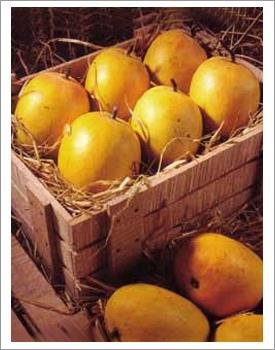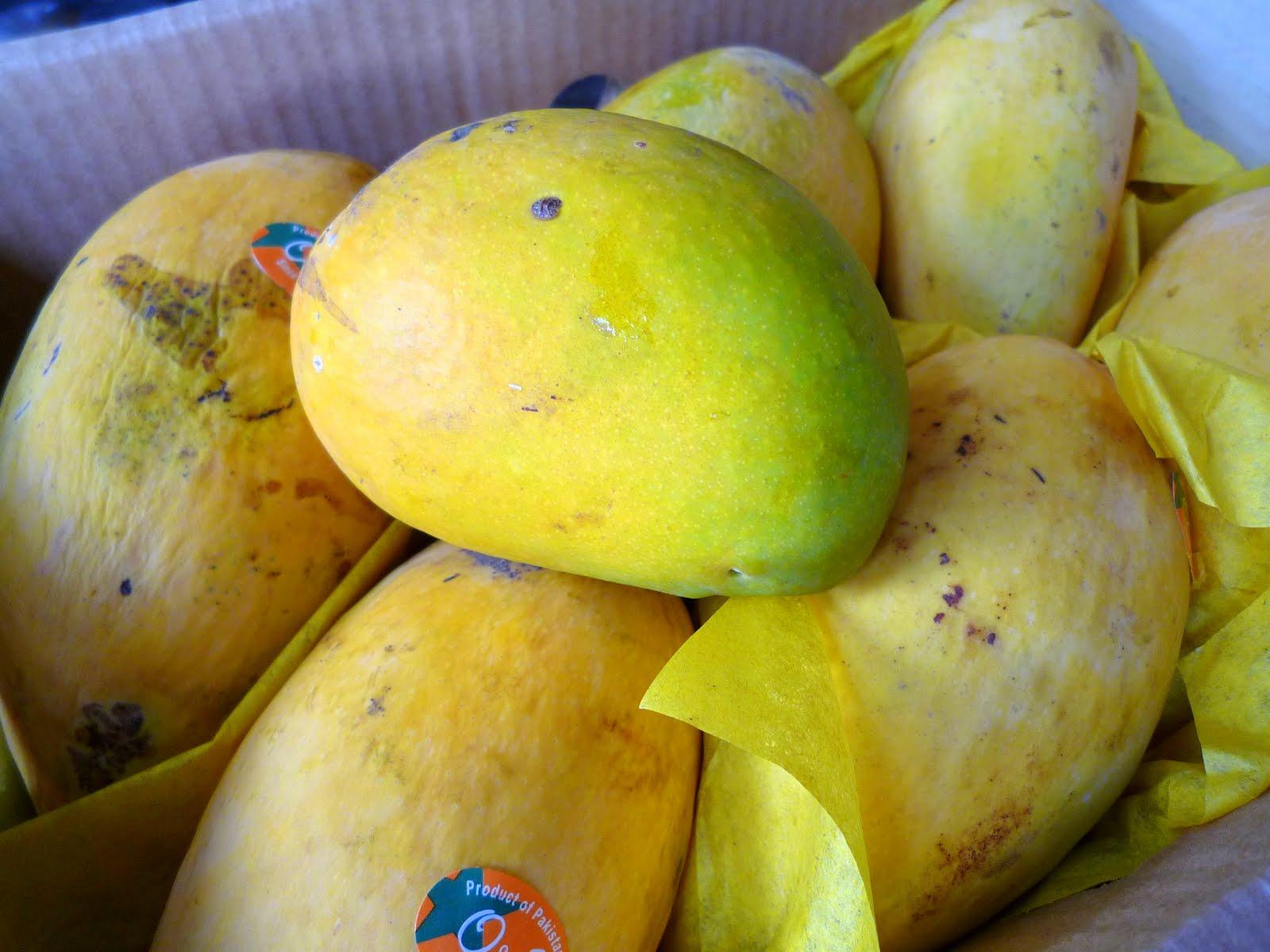Today I had my first Atulfo mango of the year, so it seemed an appropriate time to discuss this most delicious of fruits. Sure, we all know the big reddish green mangoes one finds in the supermarket year round (usually Hayden, Tommy Atkins or apple mangoes). But did you know there are over 250 varieties of mango?! And most of them taste a lot better than the supermarket mangoes. Trust me.
I began to learn about mangoes shortly after I moved to Toronto in 2005. Toronto is hardly tropical, but it's a surprisingly good place to try tropical fruits. First, it's home to lots of immigrants from south and southeast Asia, which are both tropical and boast delicious mangoes. Second, Canada is not suitable for any warm-weather crops (because, well, it's cold), so its import restrictions on fruits are more lax than in the US (there's a diplomatic angle to this too, but the given reason is usually concern about pests). That means mangoes can come to Toronto from all over the world. And they do.
 |
| Atulfo Mango |
The most common among these is the atulfo (sometimes called 'champagne') mango, which are also fairly readily available in the US (though sometimes with a shorter season). These are yellow and somewhat kidney-shaped, and are in season usually from February until September or so. They have a pronounced tang, are very sweet, have a custard-like texture with few fibers, and a fairly flat pit. As an everyday mango, these are affordable (usually $.75 - $2 per mango) and pretty good. I usually eat at least one a day in season, when I'm in a place where they're available.
Come late spring and summer, mangoes begin to arrive from India and Pakistan. These are somewhat more expensive (as they must be shipped by air) and quite a bit harder to find, though good Indian markets usually have them. Until recently, Indian mangoes were banned entirely in the US and I'm fairly certain Pakistani ones still are. Now you can get the Indian ones at good Indian markets in large cities.
 |
| Alfonso Mangoes |
 |
| Banganapali Mangoes |
I know less about Pakistani mangoes, but do enjoy the Chaunsa or Honey mango. These are available from June (when I'm told they're best) until September. They also bruise extremely easily (which affects their taste) and are not always in wonderful shape when they arrive here. When they do arrive in good shape, though, they're delicious. Milder than the Alphonso or Banganapali, but with a bit more of a sophisticated taste than the Atulfo (hard to describe, but it's there).
 |
| Chaunsa Mangoes |
There's also a mango that I don't know the name of that is from Haiti and shows up in Chinatown every January. The skin is green even when ripe, the shape is oblong, and the flesh is a bright, dark-ish orange. They are usually extremely fibrous, but nearly as sweet as the Atulfo. As an out-of-season mango, these are a good reminder of what is to come. I wouldn't want one in the summer, though.
There are also a wide range of Thai mangoes, one of which makes it to Toronto each year. This mango is dark green with a sweet, mild yellow flesh. These are extremely expensive -- usually $4-5 per fruit -- and, in my opinion, not worth it.
It also bears mentioning that unripe (green) mangoes are commonly used in Asian cooking and snacking, and widely available in good Asian or Indian markets. Unripe mangoes are crunchy and tart, but can be delicious as a salad (like a SE Asian papaya salad), as a snack with some chile salt and lime, or in an Indian curry. I often wish these were easier to come by in US supermarkets.
Happy mango eating!
Around Korea and Pakistan, Rhodes Grass and Alfalfa is being sent out with a help of Targets and voyaging. Durrani Farm makes the best item (Grass) for your business surroundings
ReplyDeletechaunsa mango